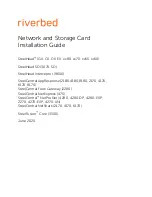
5.14
Connecting loads/actuators to analog outputs
Introduction
The analog output modules can be used to supply power to loads and actuators.
This section contains general information that is generally applicable to all the connection
options for loads and actuators described in the sections that follow.
Cables for analog signals
Always use shielded twisted-pair cables to wire analog signals. Form two twisted pairs of the
Q
V
and S+, and M and S- signals. This reduces interference. Connect both ends of the analog
cable shield to ground.
If there are potential differences between the cable ends, an equipotential bonding current,
which can flow over the shield, can cause interference of the analog signals. To avoid this
situation, you should ground the shield only at one end of the cable.
Isolated analog output modules
With the isolated analog output modules there is no electrical connection between the
reference point of the measuring circuit M
ANA
and chassis ground.
You must use isolated analog output modules if a potential difference U
ISO
can occur between
the reference point of the measuring circuit M
ANA
and chassis ground. By means of an
equipotential bonding conductor between the M
ANA
terminal and chassis ground, make sure
that U
ISO
does not exceed the permitted value.
Analog modules
5.14 Connecting loads/actuators to analog outputs
S7-400 Automation System Module Data
Reference Manual, Ausgabe 11/2016, A5E00850736-08
219
















































